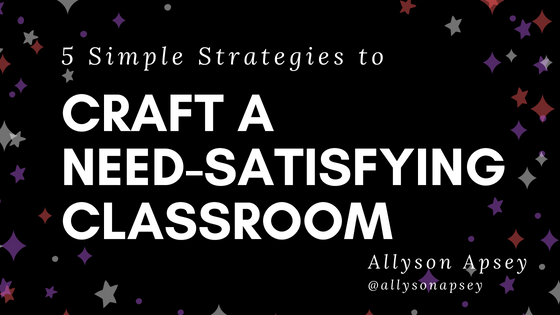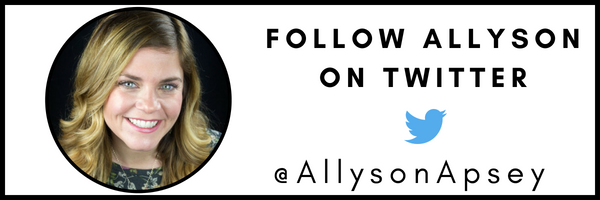When I first became a teacher, I was horrible at classroom management.
When I say horrible, I mean “pulling my hair out because I couldn’t control the classroom for the life of me” horrible. Years later, I learned that I was almost fired that first year. Yes…I was that bad.
Fortunately, someone saw a glimmer of hope in me and believed that I was teachable. So, they taught me. I learned so much about building trusting and positive relationships with students. I also learned how to create a classroom environment that was need-satisfying for students so they wouldn’t be acting out to meet their needs. I never claim to be smart, but I am a quick learner, thank goodness! I saved my job and my sanity, and my second year of teaching was a dream compared to my first.
If they don't need to act out and disrupt the functions of the classroom to meet their needs, they won't. Click To TweetIn my book, The Path to Serendipity, I tell a story of a student named Jake. Jake was hilarious, and he was the cause of much of my angst that first year of teaching. I was trying so hard to get him to comply, while he was trying so hard to get his classmates to laugh at him. Actually, I was trying really hard. Jake was just having fun.
I was teaching in a multi-age classroom, so I got to have Jake for two years in a row. I am not sure I saw that as good fortune at the time, but what a blessing that do-over ended up being. I was learning about William Glasser’s Choice Theory and started to understand that all behavior is purposeful. All of it, even Jake’s disco granny dance. We all are behaving to meet one or more of our five basic needs, which Dr. Glasser classified as power, freedom, fun, belonging, and survival. What need do you think Jake was trying to meet as he was making his classmates double-over with laughter while I fumed? Maybe belonging, power, fun?
That second year, I structured my class much differently. We had “disco lunches” that gave Jake a stage for his disco granny dance–within the functions of the classroom. I not only gave him permission to make his classmates laugh multiple times a day, but I gave him a stage.
When we create an environment where our students can easily meet their needs for power, freedom, fun, belonging, and survival, they will do what we ask. They will do it willingly, because it is need-satisfying for them. They will trust us, knowing that what we ask them to do feels good.
You don’t need to go to extremes like having disco lunches to create a great classroom environment, we can easily build in opportunities for students to meet their needs throughout the day.
Here are some simple strategies to help us CRAFT need-satisfying classrooms for our students:
C is for Choice
Students can meet their need for freedom through choices we incorporate throughout the day. They can be big choices like the opportunity to create their own project to show what they have learned, or they can be smaller choices like choosing where to sit for the day.
R is for Relationships
Students meet so many of their needs through opportunities to build relationships. Allowing students to talk to each other and to learn about each other’s passions help them feel like they belong and are an important member of the class.
Bonus: if you listen in and learn about student passions, that will set the foundation for you to have amazing relationships with them too.
[scroll down to keep reading]
A is for Ask, don’t tell
One of the most difficult needs to meet in the classroom is power. All day long, students are talked at and told what to do. Don’t be that teacher; instead be the teacher who consistently shows that she/he very much values what students already know by asking them about a topic before you teach it.
F is for Fun
Fun is not a reward, it needs to live and breathe in our classrooms every day. As a teacher, if you look at the day ahead of you and cannot pinpoint what will be fun to you, it will not likely be very much fun for your students. Fun and learning go hand in hand. It’s like salt, sprinkling a little fun makes everything taste better.
T is for Turn it around
There should be a surgeon general’s warning against getting into power struggles with students. It is really really bad for the health of your relationships–not just with the student you are struggling with, but with the other students as they watch. If you find yourself in a power struggle with a student, back out slowly by simply telling the student that you want a minute to think it over. Likely, when you go back to the student and you have both cooled off, you will easily solve the problem.
As you dream about what your classroom could be, think about how you might create an environment where students meet their needs for power, freedom, fun, belonging, and survival within the functions of what you ask them to do. If they don’t need to act out and disrupt the functions of the classroom to meet their needs, they won’t. Promise! Be sure to check out The Path to Serendipity for more ideas to not only help your classroom be a need-satisfying environment, but also how we each can live a need-satisfying life in order to be our best selves.
About Allyson Apsey
Allyson is passionate about celebrating the strengths in the staff and students she serves. She has been an educator for over 20 years, spending 15 of those years as a school leader. She has worked with students from preschool through high school, and is currently an elementary principal. She is transparent, vulnerable, eternally optimistic, and she doesn’t ask questions unless she is open to the answers.
Despite the fact that she never wanted to step foot in a school again after graduation, there is no where else she’d rather spend her days. You will find her dancing with students in the hallways in the mornings with her JammyPack, and in classrooms throughout the day. She doesn’t have a chair at her desk because you won’t often find her there.
Allyson’s background includes being certified in William Glasser’s Choice Theory, being a Certified Trauma-Informed Practitioner in Education, and she is the author of The Path to Serendipity. In addition, she serves on the Executive Board of Directors for the Michigan Elementary and Middle Schools Principals Association as the State and Federal Relations Coordinator.
Allyson is the author of The Path to Serendipity, released by Dave Burgess Consulting INC in May of 2018.
Official Site: www.allysonapsey.com



